- Home
- Antonia Fraser
The Gunpowder Plot Page 8
The Gunpowder Plot Read online
Page 8
Certainly Garnet was the opposite of a man of violence, believing with ‘his usual modest cheerfulness’, in the words of one who knew him well, that things were best settled by submission to the will of God. This applied to the reconversion of England to the Catholic Faith: political manoeuvres, let alone armed risings, were much less likely to be efficacious than prayers, the maintenance of Catholic rituals and the celebrations of Masses. Contemporaries also bore witness to Garnet’s kindheartedness and compassion. He thought it his duty to attend (in disguise) the hideous public executions of his priests in order to administer the last rites to them if he could. Such ordeals filled this sensitive and scrupulous man with apprehension: would he be able to act so bravely if and when his own turn came?
Anne’s father Lord Vaux once reflected wistfully: ‘St Paul admonisheth that women should learn in silence and subjection: in their houses they themselves should learn by demanding of their husbands; who doth not permit them to teach in their presence, but to be silent.’ But Anne Vaux (like her widowed sister-in-law Eliza) did not have a husband from whom to learn. Buoyed up by her Faith, in the words of Father Henry Garnet, ‘this brave Virgo became a veritable Virago’.36
Father Garnet, unlike Sir Thomas Tresham, meant the word ‘virago’ as a compliment. Nevertheless, for all her piety, Anne did, like Eliza, take on Sir Thomas himself, suing him in the Court of Wards as a trustee for her marriage portion. Since she had not married and had no intention of doing so, it was a bold gesture undoubtedly provoked by her desperate need of funds to help the priests. Sir Thomas was once again furious and this time managed to fight back by forcing Anne Vaux to come to Rushton, to beg for the money personally. If she showed herself ‘stomachful’ (uppish), she still would not receive it. Anne was in her turn extremely angry. Hauling along her widowed sister Eleanor Brooksby (equally pious but much more timid), Anne Vaux indulged in ‘verbal combat’ with Sir Thomas in his own house from noon until four in the afternoon, stopping him from eating his dinner. She got her money.37
As a single woman with a handsome fortune at her disposal and a convenient widowed sister to provide domestic respectability, Anne was able to play a crucial part in renting houses in which Jesuits might gather in safety. The Jesuit rule required priests to meet at least once a year – hopefully twice – in order to give an account of their conscience to their Superior and renew their vows. Such a congruence of Jesuits inevitably presented dangers which single priests, operating alone, did not face. For this purpose Anne Vaux rented Baddesley Clinton in Warwickshire from the antiquarian Henry Ferrers.
Baddesley Clinton was a secluded early Tudor mansion, with a moat, set amid woods about a hundred miles from London. The situation was perfect for the purposes of retreat and Anne immediately set about having a talented lay brother called Nicholas Owen (who will play an important part in this story) devise enough hiding-places to conceal twelve or more priests.* By using the moat and the levels of a sewer, together with secret turret trapdoors and stairways, Owen was able to ensure that Father Garnet and others survived a notorious search in 1591. They stood for four hours, half immersed in water. But they were not captured.
Not all the houses Anne Vaux and Eleanor Brooksby occupied were in the midlands. White Webbs, rented in 1600 on behalf of Father Garnet, was deep in Enfield Chase, on the borders of Hertfordshire and Essex. This was another ‘spacious house’ – but nearer to London – which could be honeycombed with escape routes and refuges. And of course not every visitor to White Webbs would actually be a priest. There would also be members of the vast Catholic cousinage to which Anne Vaux belonged by birth.
In this small world, which for security’s sake perpetuated itself by intermarriage, it is perhaps simplest to state that almost everyone was related to almost everyone else. This was certainly true of Anne Vaux, with a Throckmorton grandmother as well as a Tresham step-mother. Thus visitors to White Webbs who were her relatives included the two first cousins, children of Throckmorton sisters, Robert Catesby and Francis Tresham. They were respectively ten and six years younger than Anne and they regarded her with that affection which kindly maiden-aunt figures are inclined to inspire in their juniors.
It would be some years before the interweaving in time and place of these rash Elizabethan gallants with the forbidden English Jesuits would prove to have terrible consequences for the latter. In the meantime, it was understandable that with such women as Eliza and Anne Vaux at work, Father Robert Persons should conclude that the continuance of the Faith in England was due to the courage of its women.
So the sombre picture of ruthless persecution painted by Father Weston was not in fact unrelieved by light. First, there was the way in which Catholics managed to survive, their Faith more or less intact, by leading a kind of schizophrenic existence. Secondly, while there were ‘honest’ Papists in King James’ phrase, there were also brave priests and their courageous helpers, often female.
There was hope for the future, not only practical hope but also spiritual hope which Robert Southwell, the Jesuit put to death (after torture) in 1595, described in his poem The Burning Babe:38
As I in hoary winter’s night stood shivering in
the snow
Surprised I was with sudden heat which made my
heart to glow.
In the last year of Queen Elizabeth’s life, it began to be whispered among English Catholics that King James had already made them promises of genuine toleration to be redeemed when and if he came to the throne.
* Canonised by the Catholic Church in 1970, along with other English martyrs including Anne Line, who was executed in London in 1601 for harbouring priests.
* The Ropers were connected to Sir Thomas More: they descended from William Roper, whose brother married More’s daughter Margaret.
* Harrowden Hall was rebuilt once more in the early eighteenth century. A Grade I scheduled building, it is now the site of the Wellingborough Golf Club; nevertheless within its walls lies at least one of the numerous late-sixteenth-century hiding-places. This is in the former stable block, now the caterers’ flat, somewhere behind a thick wall at the top of a short staircase. If there are still hiding-places in the main house, which was largely refurbished in the 1970s, their location is unrecorded.
† Eliza Vaux was known as the ‘Dowager of Harrowden’ or the ‘Dowager Lady Vaux’ since she was the mother of the Lord Vaux of the day, although she never bore the actual title of Lady Vaux of Harrowden, given that her husband died before his father.
* Anne Vaux was in fact the step-sister of George Vaux, her own mother having died as a result of her birth, after which Lord Vaux married Sir Thomas Tresham’s sister Mary; but the term ‘step’ was never used during this period, nor the distinction made, at a time when so many women died young in childbirth leaving their babies to be brought up by their husband’s next wife as their ‘mother’.
* Baddesley Clinton, now a National Trust property, still retains its air of romantic mystery; and the hiding-places so skilfully constructed by Nicholas Owen can still be inspected.
CHAPTER THREE
Diversity of Opinions
I will never allow in my conscience that the blood of any man shall be shed for diversity of opinions in religion…
KING JAMES VI
to Robert Cecil
What, if anything, did King James, while in Scotland, promise to the Catholics in England? The question is of crucial importance in understanding the Powder Treason. And there is a supplementary question: if such promises were made, were they verbal or written? Unfortunately, the various personalities involved complicate rather than simplify the issue: none of them is particularly satisfactory from the point of view of honest record.
There was King James’ own way with hints, protestations and the like – the superb diplomatic skill by which he raised but did not satisfy religious hopes. His dealings with the Papacy were certainly not sincere since, whatever his feelings about Rome as the historic Mother Church, King
James never had any plans to become a Catholic. The granting of toleration for other Catholics was rather different, and makes estimating the King’s sincerity a much subtler problem.
In the course of his secret correspondence with Robert Cecil, which began in the spring of 1601, King James gave vent to a number of opinions on the subject, although we should bear in mind that these letters, written and received without the old Queen’s knowledge, were emphatically not destined for publication, and nor were they dated. For example, on one occasion he saw fit to warn ‘my dearest and trusty 10’ as Cecil was known in their private code, of ‘the daily increase that I hear of popery in England’. King James, who enjoyed giving a good lecture, ended his warning on a kindly if condescending note. He admitted that it might be argued that Cecil (actually in England) knew all this much better than James (in Scotland) did: ‘yet it is a true old saying, that another man will better see a man’s game than the player himself can do’.1
Cecil responded with an interesting account of his personal credo. Much as he loathed the Catholic priests and the peril they represented – ‘I condemn their doctrine, I detest their conversation’ – nevertheless he confessed that he shrank to see them ‘die by dozens’ when ‘at the last gasp’ they came ‘so near loyalty’. (Cecil’s compassion, however, specifically excluded the Jesuits, whom he designated ‘that generation of vipers’ trading in ‘the blood and crowns of Princes’.) On another occasion James similarly dissociated himself from the shedding of blood. And where the priests were concerned, he believed that exile was a better solution than execution: rather than have their heads separated from their bodies ‘I would be glad to have both their heads and their bodies separated from this whole island and transported beyond seas.’2
This letter from King James probably comes near to expressing what he actually felt on the subject: ‘I will never allow in my conscience that the blood of any man shall be shed for diversity of opinions in religion, but I should be sorry that Catholics should so multiply as they might be able to practise their old principles upon us.’ Although he would never agree that men should die for ‘errors in faith’, a pronounced rise in the numbers of Catholics was another matter. Such a Catholic increase would have serious consequences ‘as by continual multiplication they [the Catholics] might at last become master’.3
When King James wrote these words, he suggested at the least that English Catholics might one day enjoy the tolerated minority status of the Protestant Huguenots in France. Yet there was an obvious flaw in this argument, at least from the Catholic point of view. The King indicated that Catholics might be tolerated, just so long as their numbers did not increase. But Catholic toleration almost certainly would bring about an increase in numbers. The religious climate would be balmier and the Church Papists would venture forth again under their true colours.
These were ideas being floated rather than plans being made. But some time in 1602 Henry Percy 9th Earl of Northumberland initiated a more down-to-earth correspondence on the subject with the King. He came of a family (like the Howards) that had suffered much for the King’s unfortunate mother. Cecil’s father might have been responsible for Mary Queen of Scots’ head being cut off (as James was rumoured to believe) but Northumberland’s uncle had lost his head in 1572 for his part in the Northern Rising on behalf of Queen Mary. Born in 1564, the 9th Earl was two years older than James VI and a magnificent peer with massive estates in northern England, as well as in the south, where he had an establishment at Petworth in Sussex. Highly gifted, his scientific experiments and his remarkable scientific library would later earn him the sobriquet of the ‘Wizard Earl’. But Northumberland also had something remote about him (to which his deafness contributed) and his speech was inclined to be slow. At times shy – ‘a kind of inward, reserved man’ – and at other times a manic gambler with a temper that flared up, he constituted a puzzle to his contemporaries.4 His lofty position aroused in others not only respect but jealousy.
Northumberland’s status at the court of Elizabeth was further complicated by a troubled marriage. His wife Dorothy was the sister of the Queen’s favourite Essex, and for this, and her own sweetness of character, Elizabeth bore her great personal fondness. The Queen took Dorothy’s side when the couple separated. A brief reconciliation resulted in the birth of a longed-for heir in 1602, but then the marriage again broke up. In general Northumberland does not seem to have exercised good judgement in his various relationships. Nowhere was this more apparent than in his employment of a certain Thomas Percy as his go-between with King James.
Thomas Percy was a poor relation, one of those hangers-on that flocked around great men, petitioning for preferment. The connection was actually quite remote: Thomas Percy was a second cousin once removed, being the great-grandson of the 4th Earl (not an illegitimate half-brother of Northumberland as is sometimes suggested).5 But a kind of clan system existed by which a comparatively distant relation such as Percy would look to the proverbially generous Northumberland as his patron. In 1596 Percy was made Constable of Alnwick Castle, the great Percy fortress on the borders of Scotland, and thus the agent for the family’s northern estates. Northumberland declined a post as ambassador from Queen Elizabeth (his deafness made him draw back) but he did hold a command in the Low Countries from 1600 to 1601, where Thomas Percy joined him before the death of Queen Elizabeth. At some point Percy’s particular energies convinced Northumberland that he was the man to handle the somewhat delicate Scottish mission.
Presumably Percy’s religion was the clinching factor. Northumberland himself was summed up by a French ambassador as one who was ‘a Catholic in his soul’. Northumberland put it rather differently when he wrote to James to say that, although he was not a Catholic himself, there were sundry people in his entourage who had ‘oars in that boat’.6 He was referring by this to a few old recusant servants lingering in his house: the sort who would threaten no one. But Percy was different. He was a much more political animal, and his Catholicism more determinedly active.
Percy was a controversial figure in his own time – ‘a subtle, flattering, dangerous knave’ according to one verdict. He was in his forties at the death of Elizabeth (although his white hair made him look older) and a striking figure with his exceptional height and formidable build. He had a certain charm, despite the general seriousness of his manner, and a great deal of energy. This energy was physical as well as mental and as a result Percy had a tendency to sweat and used to change his shirt twice a day, giving ‘much labour to his laundresses’.7
The personality of Thomas Percy still exercises a baleful influence on the events surrounding the Gunpowder Plot in the minds of historians, as, it might be argued, it did over the unwisely generous Northumberland. According to a Catholic source, Percy had had a wild youth in which he ‘relied much on his sword and personal courage’ and relished being among ‘foul-mouthed, ribald people’. His conversion to Catholicism – or at any rate his moving from some form of Church Papistry to more ardent belief – was supposed to have calmed him down.8 Nevertheless, some wildness seems to have remained, since he left his wife for another woman. In an age before the official registration of marriage or for that matter any possibility of legal divorce, men dealt with the situation by simply marrying again in another part of the country, which is what Percy appears to have done. His first wife, born Martha Wright, whom he married in 1591, was abandoned in London, in Holborn, ‘mean and poor’, to support herself as best she could by teaching the daughters of recusants. The other wife was in Warwickshire.9
The first marriage, even if a failure in personal terms, had important consequences for Percy. Martha Wright came from one of those stubbornly recusant families in Yorkshire, whose womenfolk were celebrated for their constancy. Her mother Ursula Wright – ‘a great prayer’ – served many years in prison for refusing to attend Protestant services. Another of Ursula’s daughters, who married into the Yorkshire recusant family of Ward, became the mother of the remarkable propon
ent of female education and founder of the Institute of the Blessed Virgin Mary, Mary Ward, born in 1585. At Ploughland Hall, in east Yorkshire, the young Mary Ward spent five years in grandmother Ursula’s care.10
Martha was, in the family tradition, ‘an honourable good lady’ and her teaching was still remembered with gratitude over forty years later by ‘those that were her scholars’. Apart from her work, Martha lived ‘very private’, due to the fact that she frequently harboured priests.11
Thomas Percy himself was clearly a clever man. If he were not, Northumberland’s continued reliance on his administrative abilities in the north would not make sense. At the same time, Percy was in some ways unscrupulous. He was not the only unjust steward to seek to benefit from the profits of a master immeasurably more wealthy than himself. Nevertheless, it was hardly to his credit that charges of dishonesty relating to the handling of the Percy estates were at one point brought against him, and proved. Yet Percy unquestionably had Northumberland’s trust. It was Percy who was sent on a confidential mission to Scotland, before the death of Queen Elizabeth, on behalf of the English Catholics. Northumberland intended to ‘deliver’ the English Catholics to King James, and the King seemed to be ready to ‘receive’ them – on his terms.
Northumberland’s plan was to build up a power base in the new reign and with the new sovereign, to make up for the Elizabethan family disgrace. There was also the need to counteract the rising influence of Cecil, in that perpetual dance to the music of jealousy which occupied sixteenth-century courtiers. As for the English Catholic faction, its floating quality, stressed in the previous chapter, made it easy for outsiders to overestimate its importance. Afterwards, when everyone was busy rewriting history to assert their own innocence (or the guilt of others) Northumberland would assert that the mission had been Percy’s idea.12 For all Percy’s power to manipulate his patron, this does not ring true. Northumberland had a clear agenda in which he intended to make use of the Catholics to his own advantage.

 Warrior Queens
Warrior Queens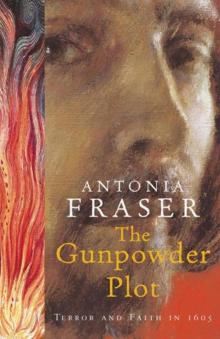 The Gunpowder Plot
The Gunpowder Plot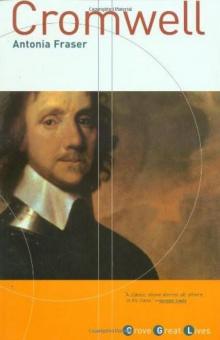 Cromwell
Cromwell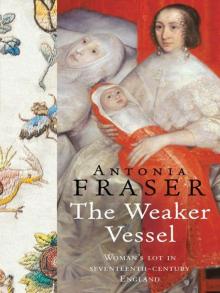 The Weaker Vessel: Women's Lot in Seventeenth-Century England
The Weaker Vessel: Women's Lot in Seventeenth-Century England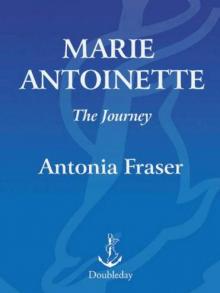 Marie Antoinette: The Journey
Marie Antoinette: The Journey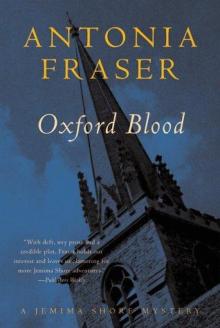 Oxford Blood
Oxford Blood Your Royal Hostage
Your Royal Hostage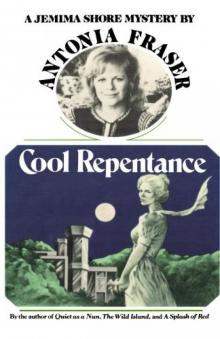 Cool Repentance
Cool Repentance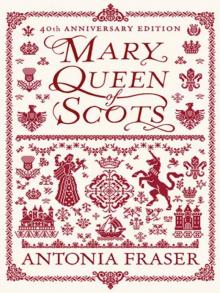 Mary Queen of Scots
Mary Queen of Scots Political Death
Political Death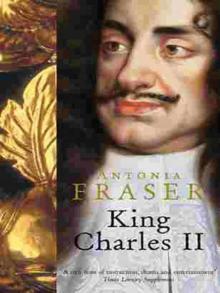 Royal Charles: Charles II and the Restoration
Royal Charles: Charles II and the Restoration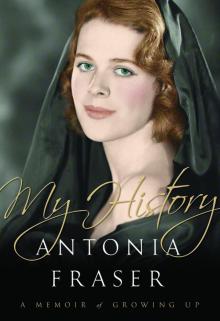 My History: A Memoir of Growing Up
My History: A Memoir of Growing Up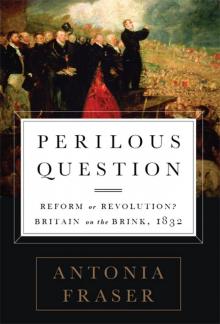 Perilous Question: Reform or Revolution? Britain on the Brink, 1832
Perilous Question: Reform or Revolution? Britain on the Brink, 1832 Jemima Shore at the Sunny Grave
Jemima Shore at the Sunny Grave A Splash of Red
A Splash of Red Must You Go?: My Life With Harold Pinter
Must You Go?: My Life With Harold Pinter Love and Louis XIV: The Women in the Life of the Sun King
Love and Louis XIV: The Women in the Life of the Sun King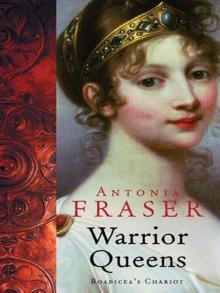 The Warrior Queens
The Warrior Queens The Wild Island
The Wild Island Quiet as a Nun
Quiet as a Nun Perilous Question
Perilous Question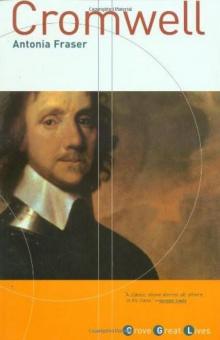 Cromwell, the Lord Protector
Cromwell, the Lord Protector Gunpowder Plots
Gunpowder Plots The Wild Island - Jemima Shore 02
The Wild Island - Jemima Shore 02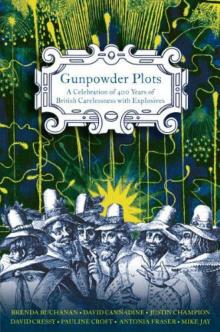 Gunpowder Plots: A Celebration of 400 Years of Bonfire Night
Gunpowder Plots: A Celebration of 400 Years of Bonfire Night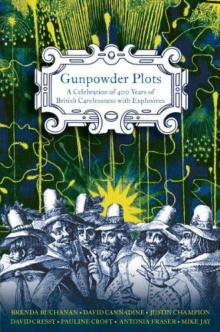 Gunpowder Plots_A Celebration of 400 Years of Bonfire Night
Gunpowder Plots_A Celebration of 400 Years of Bonfire Night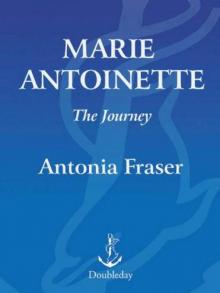 Marie Antoinette
Marie Antoinette Must You Go?
Must You Go?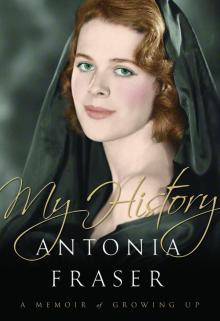 My History
My History